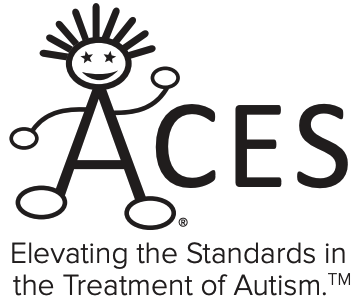July 4, 2021
The New York Times
David Axelrod
My daughter, Lauren, turned 40 last month. She is happy and healthy. And that is nothing short of a miracle.
From the moment my wife, Susan, found Lauren blue and limp in her crib at the age of 7 months — the consequence, we later would learn, of epileptic seizures she suffered in the night — Lauren’s life has been a struggle.
These brutal seizures would continue, poorly controlled, for the next 19 years, roiling her developing brain and necessitating an ever-shifting regimen of medications with punishing side-effects, of surgeries and hospitalizations. More than once, we feared we would lose her.
Lauren’s doctors finally found a cocktail of medications that would work to subdue the seizures, but the battering her brain took from the ordeal left her with significant developmental deficits
We moved our family from one town to another in search of special education programs that would include her, with adaptations, in regular classrooms. But as the years went by and her classmates matured emotionally and intellectually, the gap between Lauren and her peers became a chasm. The girls and boys around her were growing into young women and men, with all that entails, while Lauren was still in many ways a child, poignantly struggling to find her place.
Lauren’s seizures had been terrifying and painful. But her loneliness was absolutely heartbreaking. She longed for friendships and, whenever she got the chance, gravitated to others with similar challenges and shared experiences. Lauren didn’t need words, which were often hard for her to find, to communicate loud and clear to us what mattered most to her.
When high school ended, we faced a cliff familiar to many parents of children like Lauren. In Illinois, as in most states, jobs and services for adults with disabilities are woefully inadequate. We struggled to find programs and opportunities for the relationships that Lauren craved.
We agonized over whether this would be her future, sitting at home, waiting for activities, without an independent life of her own. We anguished over what would happen when we were gone.
But 19 years ago, that all changed.
Lauren moved to Misericordia, a remarkable community for people with intellectual disabilities near us on Chicago’s North Side. For the first time, her days were rife with activities and her life was filled with friends
No, it’s not the life we envisioned for Lauren the day she was born, a seemingly healthy, bright-eyed little girl. But looking back at the obstacles she’s faced, she’s thriving in ways that once seemed impossible.
Lauren shares an apartment with two other women in a bustling dormlike setting on a pleasant, leafy campus. She and her friends walk to nearby shops and restaurants. She has vocational activities and jobs on campus and off, which have given her a sense of worth and responsibility. She sings and signs in a choir, takes art and cooking classes, and hits the fitness center or pool every day.
While she has the care and supervision she continues to need — and always will — she also is more independent than we ever could have hoped.
Most of all, she is happy. Genuinely happy.
I wish that were the end of the story.
But today, Lauren faces another battle, not with epilepsy or the toll it’s taken, but with policy changes that could deny her and others with intellectual disabilities the life they choose in concert with their families and loved ones.
The issue is federal Medicaid funding to states, which helps underwrite residential facilities for people with intellectual disabilities, and the conviction of some advocates and policymakers that larger settings like Misericordia should be discouraged.
The debate is rooted in an ugly history. For generations, Americans with intellectual disabilities were too often sent to large institutions where they were warehoused, abused and deprived of the opportunity to live their fullest possible lives.
I am profoundly grateful for the disability rights movement that has waged a decades-long battle to shutter such institutions, many of which were run by the states, and to win for people with intellectual disabilities the right to live in small apartments and homes with services in residential neighborhoods
But now the ideal has hardened into dogma: All larger communities are bad. All small, neighborhood-based group homes are good.
Of course, neither of these things is true, and the rigidity of that thinking denies the simple truths that there are good and bad places, large and small, and people with disabilities are not all the same. Like anyone else, they have different personalities, capacities and preferences.
Some may thrive in small homes or apartments in residential neighborhoods. Lauren has that option through Misericordia but prefers the socialization of her dormlike setting and the constant stimulation of campus life.
But rather than ensuring a full range of high-quality residential options for people with disabilities to fit their individual needs and circumstances, the prevailing view of many policymakers is to compel a one-size-fits-all answer.
What is painful is that these changes are being promoted by good people, trying to do the right thing. Many are my friends and former colleagues.
We saw this play out through the American Rescue Plan Act, enacted in March, which explicitly provided disproportionate aid to smaller community-based group homes and in-home care settings over larger settings like Lauren’s home in Misericordia.
The Rescue Act included emergency funding to increase pay for direct-care workers in home and neighborhood-based settings. But it omitted equally deserving women and men who work in larger settings and devotedly support Lauren and others. (Misericordia received some of this emergency funding but only for its neighborhood-based group homes, not the main campus.
Now a proposal by Democratic leaders in Congress — the Better Care Better Jobs Act — would vastly expand federal funding for home and community-based services for the elderly and people with disabilities, which I strongly support. It is badly needed and long overdue.
But as currently written, the plan also would make the funding disparity based on size and type of care permanent, which is wrong. It is a formula that disadvantages larger settings and gives states further incentive to shift away from them, even if they are doing extraordinary work.
Instead of judging by size, isn’t the right path to fully fund an array of high-quality options and afford people like Lauren the dignity of choice and the happiness they deserve?














